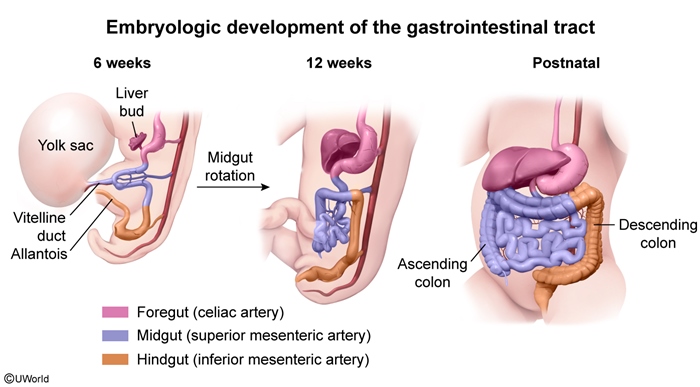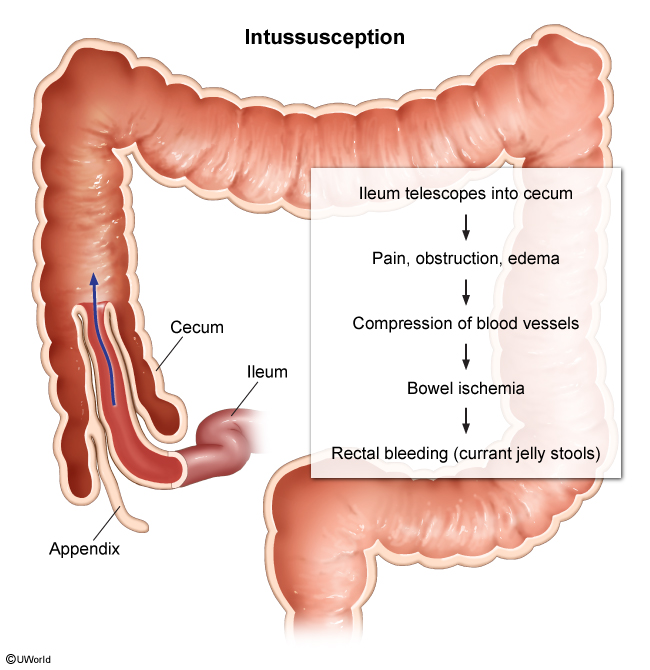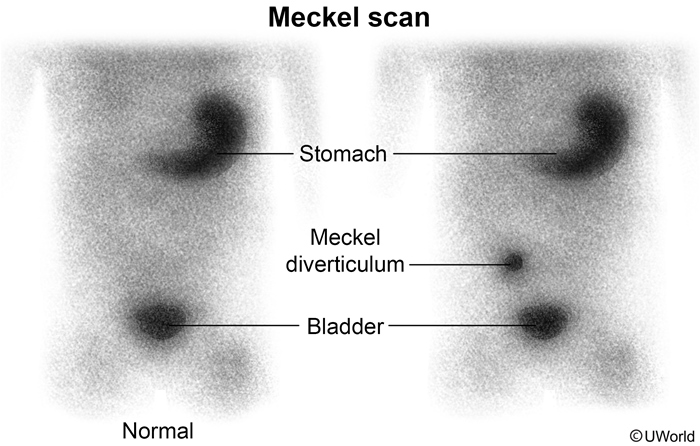Meckel Diverticulum
Article Sections
Introduction
Meckel diverticulum is a congenital anomaly that results from incomplete obliteration of the vitelline duct during embryonic development, creating a diverticulum in the small intestine. It is the most common congenital anomaly of the gastrointestinal tract and follows the "rule of 2s."
Pathophysiology and risk factors
By 4 weeks gestation, the omphalomesenteric (vitelline) duct connects the yolk sac to the midgut, allowing nutrients to pass from the yolk sac to the developing embryo (Figure 1). Normally, the vitelline duct closes between 5 and 6 weeks gestation. Incomplete obliteration of the vitelline duct leads to a spectrum of anomalies (Figure 2), including:
- Meckel diverticulum (most common) results from partial closure of the vitelline duct, with the patent portion attached to the ileum. A fibrous band may connect the tip of the diverticulum with the umbilicus.
Continue Learning with UWorld
Get the full Meckel Diverticulum article plus rich visuals, real-world cases, and in-depth insights from medical experts, all available through the UWorld Medical Library.
Figures



Images
